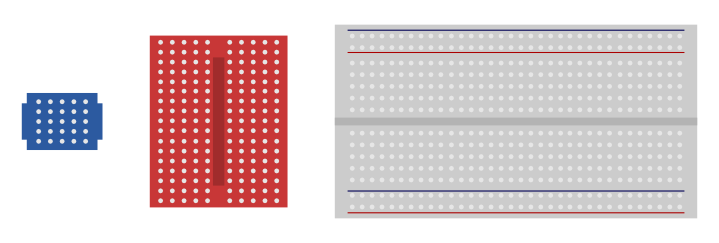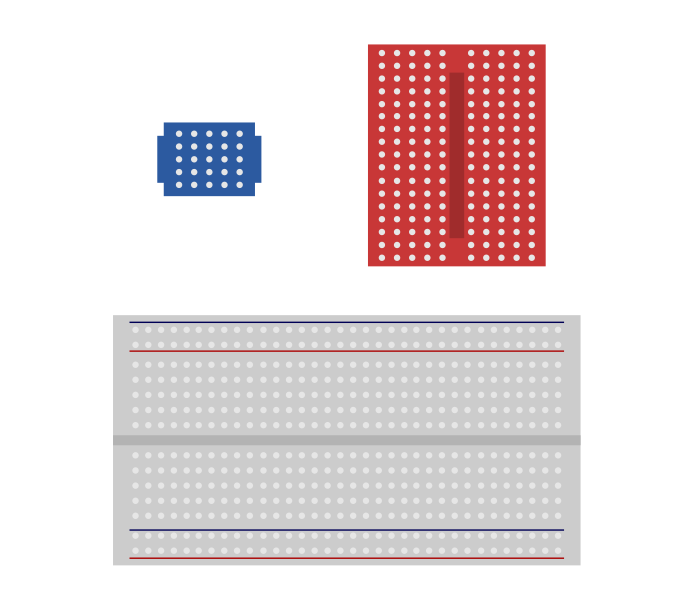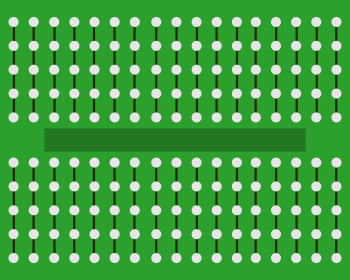Build a Prototype for Your Electronic Project
You've got your idea, your components, and you are ready to start making. But where to begin? Writing the code to put in your Arduino board? Soldering your components together? Here is how I’ve dealt with that so far.
There are some equipments designed just to build prototypes, we can find them easily online and they are not expensive.
You’re new best friends: the breadboards
A breadboard (aka protoboard or plugboard) is a solderless board where you can plug and unplug components as you want, allowing you to test, build and rebuild your circuit without even turning on your soldering station. There are multiple sizes to fit all your projects.


How does it works ? Each row are connected together, as seen on this drawing:

You can directly plug the pin of your components, and to make connections between them, use jumper cables. You’ll need different connectivity (male/female ends) and various colors to use them wisely!
The process of making your prototype
When it comes to organizing your development, the process is up to you. You may even have already adopted a methodology that works for you. I still thought it would be great to share my way of building my electronic projects.
1. Develop everything… on paper
Write down all the specifications of your project: list of material to gather, technical data. Start drawing your schematics.
2. Read some documentation
Using something you’ve never worked with? Look up its reference online, eventually search some use cases and examples to learn how to use it.
3. Experiment
From theory to practise, mess around with your components and validate all your schematics.
4. and 5. Build and develop your project
Once you’ve put aside all your interrogations, build your product as planned, and develop the code associated to it.
The next step
You are satisfied of your prototype, so is that it? What are your options at this point?
You’re thinking about getting this into production, and make a business out of it:
A prototype and a well written documentation is not enough to show potential investors. Start a marketing research. Who could be interested by your product? At what price?
It was just a project to answer someone’s need:
So your prototype is maybe more than a prototype: it is your final product. You can start thinking about optimizations, packaging the circuit into a box.
I hope than these thoughts help you in your project and ambitions, ask your eventual questions below and thanks for sticking around on my blog.
Florian